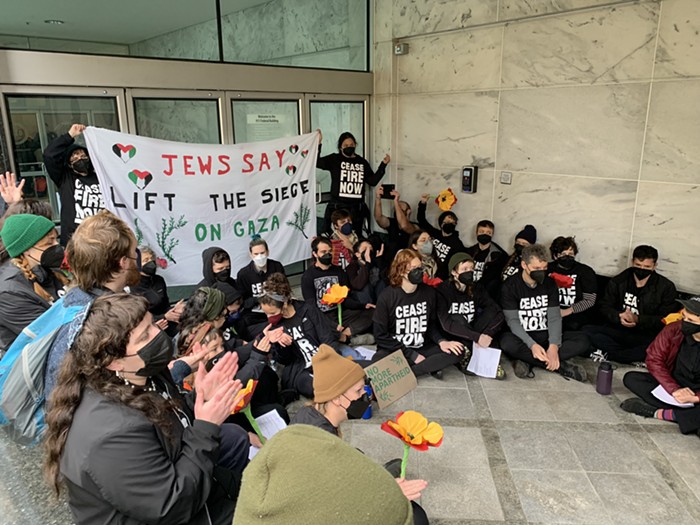
City Council voted yesterday to let a developer build a 16-story apartment complex in the middle of Old Town Chinatown, potentially shifting the city's standard on height limits downtown.
The decision, ushered in by Mayor Ted Wheeler, sets the maximum height of a proposed building in Old Town to 160 feet (or, 16 stories), far beyond the 100 foot limit currently imposed by the Chinatown Historic District. While the settled on height is still shorter than the building developer's initial request of 200 feet, some still believe the new tower will threaten the historic designation of the Chinatown Historic District—and irreversibly alter the downtown neighborhood's feel.
The vote may be seen as a signal to developers that the city can, and will, bend to developer pressure within Portland's historic districts.
The property in question sits between Northwest 4th and 5th, and is currently being used as a parking lot. Guardian proposed to turn it into a mixed-use building, which will include 324 apartments. It was initially unclear if the developer would make any of these apartments affordable for low-income Portlanders.
That changed yesterday, when Commissioner Nick Fish introduced and passed an amendment that requires Guardian to use an affordable housing "bonus"—a tool that allows developers to increase heights in exchange for affordable housing units—to achieve any extra height beyond 125 feet. This means that 20 to 25 percent of the added square footage must be be affordable housing.
The city council vote clashes with the Historic Landmarks Commission vote to deny the height increase, which argued that even 125 feet is too tall for the Chinatown Historic District. One advocate, Katelyn Weber of Restore Oregon, said at a prior council meeting, “At 125 feet, Block 33 will overshadow historic buildings. At 160 feet, it will swallow them whole.”
Wheeler originally proposed the building reach 160 feet on the west side of the block, but was persuaded by Comissioner Dan Saltzman that 200 feet may work. The two voted to approve Saltzman's 200-foot cap amendment, but they were unable to secure a third vote for that height—double the maximum height limits of the surrounding blocks. Instead, the 160-foot cap passed by a margin of 4-1, with Fritz, the dissenting vote, calling the decision a prime example of "spot zoning."
The commissioners' rare decision to overturn a Historic Landmarks Commission vote could seriously impact the HLC's power over city development decisions in the future—and sets a clear example for future developers to point to when asking the city for special regulatory treatment.


















